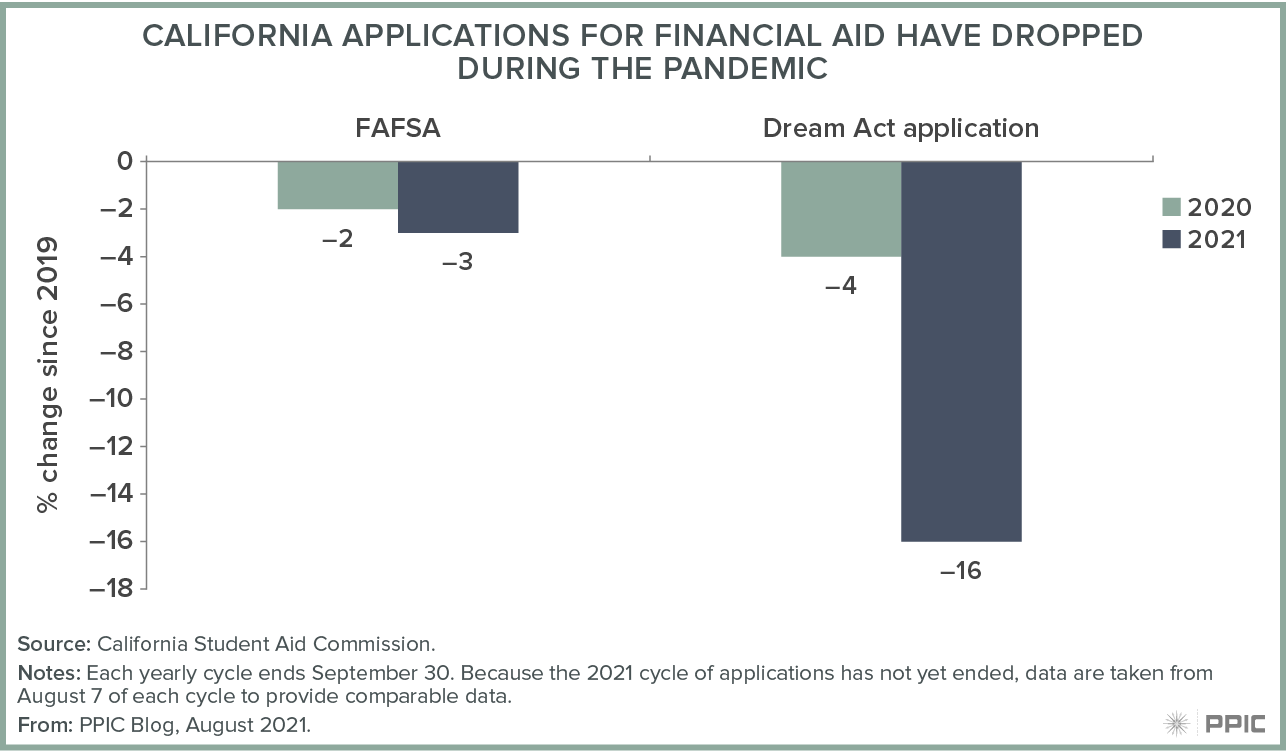In 2001, Assembly Bill (AB) 540 created a more affordable college pathway for undocumented high school students, who are not eligible for federal grants or loans of any kind. Over the past two decades, tens of thousands of students have benefited from the legislation, but a sharp decline in California Dream Act applications during the pandemic may make college less affordable for some students—or even lead to a decline in enrollment.
AB 540 waived the nonresident portion of tuition for undocumented students who met eligibility requirements, which include three or more years of enrollment in a California K–12 school and a pledge to legalize their immigration status when they were eligible. Subsequent bills allowed students to receive state aid—such as Cal Grants—and institutional financial assistance via the California Dream Act application.
More than 22,000 Cal Grants were awarded to Dream Act applicants for the 2019–20 school year; this represented about 4% of all Cal Grants. Last year, more than 45,000 students filled out Dream Act applications.
During the pandemic, however, applications for financial aid have dropped in California and the rest of the country. In 2021, Free Application for Financial Aid (FAFSA) forms submitted by Californians are down 3% compared to 2019, while Dream Act applications have fallen 16%. Applications are down for both potential first-time students and potential returning students.

Pandemic disruptions—including health challenges and increased financial instability—have been especially challenging for students from families with lower incomes. In addition, a recent federal court ruling halted the processing of new applications to the Deferred Action for Childhood Arrivals (DACA) program, putting the future federal status of some students in doubt. These and other challenges may have a negative impact on college enrollment.
The state is taking steps to ensure that more students receive aid. The recently passed AB 132 expands programs and eligibility, and will require districts to confirm by the 2022–23 school year that their high school seniors have completed financial aid applications for the 2023–24 school year. Students have until March 2 in California to apply for aid for the 2022–23 school year. State and educational leaders will need to provide support and outreach to ensure that college remains an affordable choice.





